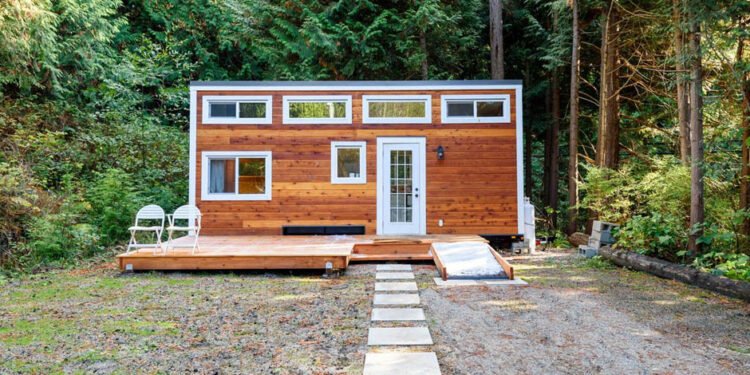If you’re intrigued by the idea of downsizing, simplifying, and embracing a minimalist lifestyle, the tiny home movement might be calling your name. The concept of living in a home that’s under 400 square feet is gaining popularity for its affordability, environmental impact, and lifestyle benefits. Whether you’re looking to buy a tiny home for year-round living, as a mobile retreat, or as a sustainable way to explore the outdoors, here’s everything you need to know before diving into the tiny homes for sale market.
1. Benefits of Buying a Tiny Home
Tiny homes offer numerous perks that attract people from various walks of life. Here are some key benefits to consider:
- Affordability: Tiny homes are generally much more affordable than traditional homes. The cost per square foot can vary, but overall, purchasing a tiny home can allow you to own property without taking on substantial debt.
- Environmental Impact: With a smaller living space, you use fewer resources to heat, cool, and maintain the home. Many tiny homes are built with sustainability in mind, incorporating solar panels, composting toilets, and other eco-friendly features.
- Mobility and Flexibility: Some tiny homes are built on wheels, offering the option to take your home wherever you want. For people who love to travel or relocate often, tiny homes can provide a sense of stability along with the freedom to move.
- Simplified Living: Tiny homes encourage a minimalist lifestyle, helping you declutter and focus on what’s truly essential.
2. Types of Tiny Homes for Sale
Before browsing tiny homes for sale, it’s helpful to understand the different types available. Here’s a quick rundown:
- Tiny Homes on Wheels (THOW): These are built on trailers, making them movable and exempt from some local building codes. THOWs offer flexibility if you plan to relocate frequently.
- Container Homes: Constructed from repurposed shipping containers, these homes are sturdy and durable and often more affordable than other tiny home models. They can be stacked or customized for unique layouts.
- Tiny Houses on Foundation: Permanent tiny homes are fixed to the land and comply with standard building codes. They’re an excellent option for those who prefer a tiny lifestyle but want a more conventional, stationary setup.
- Van Conversions: For those who value extreme mobility, converted vans provide a home on wheels that can be parked just about anywhere.
3. Financing Options for Tiny Homes
Financing a tiny home can differ from traditional mortgages. Since many banks don’t consider tiny homes a traditional investment, securing a loan might require alternative methods:
- Personal Loans: Some banks and online lenders offer personal loans for tiny home purchases, though they may come with higher interest rates than a standard mortgage.
- RV Loans: If your tiny home is on wheels, you might qualify for an RV loan, as these loans typically cover movable living spaces.
- Tiny Home Lenders: Specialized lenders focus specifically on tiny homes for sale. These lenders understand the market and can offer financing options tailored to tiny home buyers.
- Home Equity Loans or Lines of Credit: If you already own a home, you might be able to finance your tiny home using the equity in your current property.
4. Understanding Building Codes and Zoning Regulations
Tiny homes can fall into a grey area with local building codes and zoning laws. Before purchasing a tiny home, research local regulations to ensure you can legally place or live in your tiny home.
- Building Codes: Tiny homes on wheels may not be subject to the same codes as traditional homes. However, if you’re purchasing a tiny home on a foundation, you’ll need to ensure it meets local building codes for safety and habitability.
- Zoning Laws: Many cities have restrictions on where tiny homes can be placed, especially if they’re classified as RVs. Check with local zoning departments to find areas that welcome tiny homes or have more flexible regulations.
5. Design Considerations for a Tiny Home
A key part of choosing the right tiny home is finding a design that maximizes space and aligns with your needs. Consider these design aspects when browsing tiny homes for sale:
- Efficient Layout: Look for homes with open layouts and multi-functional spaces. For instance, a loft bed can free up floor space, while built-in furniture, like foldable desks or tables, maximizes utility without cluttering the space.
- Storage Solutions: Storage is critical in tiny homes. Look for homes with built-in storage under beds, in walls, or as part of the furniture.
- Natural Light: Large windows or skylights can make a small space feel bigger and more inviting. Natural light creates a sense of openness that’s essential in compact living spaces.
- Appliances: Opt for appliances and fixtures that fit the scale of a tiny home. Compact appliances, such as washer-dryer combos and mini-fridges, are designed to save space without sacrificing functionality.
6. Costs Beyond the Initial Purchase
The sticker price of a tiny home might seem manageable, but there are other costs you’ll need to budget for:
- Land Costs: If you’re not purchasing land, you’ll need to find a place to park or set up your tiny home. Some tiny home owners rent land or stay in RV parks, which come with fees.
- Utilities and Hookups: Consider whether your tiny home is off-grid or connected to city utilities. Off-grid solutions, like solar panels or composting toilets, can reduce ongoing costs, but the initial setup might be pricey.
- Maintenance and Repairs: Like any home, tiny homes require regular upkeep. Exterior wear, plumbing maintenance, and appliance repairs should all be considered.
- Transportation: If your tiny home is on wheels and you plan to move often, factor in the cost of moving it. This may include hiring a truck or paying for setup each time you relocate.
7. Tiny Home Communities and Lifestyle Considerations
Living in a tiny home is more than just a change of address—it’s a lifestyle shift. Many tiny home owners enjoy living in communities of like-minded individuals who share a focus on sustainability and minimalism. Tiny home communities can provide the support and amenities that are sometimes challenging to access independently, like shared garden spaces, workshops, or communal gathering areas.
Consider whether you’re interested in joining a tiny home community or building your home on private land. Each setup has unique pros and cons, and your choice might significantly impact your lifestyle.
8. How to Find Tiny Homes for Sale
Once you’ve researched your options, it’s time to start looking at tiny homes for sale. Here’s where you can begin:
- Tiny Home Builders: Many companies specialize in custom tiny homes and can create one to your specifications. Working with a builder ensures your home meets safety standards and matches your design preferences.
- Tiny Home Shows and Expos: Tiny home shows and expos bring together builders, designers, and prospective buyers. It’s an excellent place to explore different models and get a sense of the market.
- Online Marketplaces: Websites like Tiny House Listings, Tiny House Marketplace, and RVTrader.com list tiny homes for sale from both private sellers and companies. These marketplaces often feature a range of styles and prices.
- Social Media Groups: Many online communities, such as those on Facebook, feature listings from sellers across the country. These groups can also connect you with people who’ve already purchased tiny homes and are willing to share their experiences.
9. Customizing Your Tiny Home
One of the appealing aspects of tiny homes is the ability to customize them to your lifestyle. Many builders offer options for adding specific features or choosing from a selection of materials, colors, and layouts. Common customization options include:
- Off-Grid Systems: Additions like solar panels, composting toilets, and rainwater collection can help make your tiny home self-sufficient and environmentally friendly.
- Interior Layout Adjustments: Custom shelving, adjustable beds, or larger kitchen spaces are popular upgrades that can improve the livability of a tiny space.
- Eco-Friendly Materials: Sustainable and recycled materials are popular in tiny homes for sale. You can opt for eco-friendly insulation, flooring, and finishes that reduce your home’s carbon footprint.
10. What to Look for When Touring Tiny Homes for Sale
Before finalizing a purchase, it’s essential to evaluate the quality and craftsmanship of the home. Some critical areas to check include:
- Insulation and Ventilation: Proper insulation is necessary for temperature control, while ventilation prevents mold growth in a small, closed space.
- Plumbing and Electrical Systems: Ensure the plumbing and electrical systems are installed correctly and meet local codes. Look for professionally wired setups, secure connections, and safe, durable materials.
- Structural Integrity: A well-constructed tiny home should feel sturdy. Check the floors, walls, and roof for any signs of damage, leaks, or weak spots.
- Resale Value: If you’re purchasing from a reputable builder, your tiny home will likely hold its value better. Homes from certified builders can often command higher resale prices.
Is a Tiny Home Right for You?
Tiny homes offer an exciting way to own a home with a smaller footprint, both environmentally and financially. However, they come with unique considerations, from understanding zoning regulations to making lifestyle adjustments. If you’re ready for an affordable, sustainable, and flexible way of living, exploring tiny homes for sale could be the start of your next adventure.
When you’re prepared to buy, be sure to visit tiny home builders and listings to find the ideal model that fits your needs and dreams. Whether you’re after a minimalist lifestyle, a travel-ready home, or a cozy dwelling nestled on private land, there’s a tiny home out there for you. Happy tiny home hunting!












